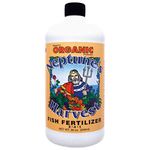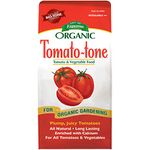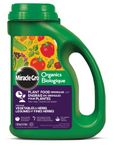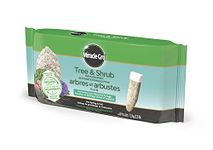10 bestTomato Fertilizersof January 2026
112M consumers helped this year.
1
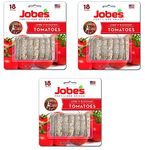
Jobe's Tomato Fertilizer Spikes, 6-18-6 Time Release Fertilizer for All Tomato Plants, 18 Spikes per Blister Package, 3-Pack, 54 Spikes Total
Jobe's Organics

9.9
2
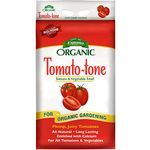
Espoma Co. TO18 Tomato Tone, 18-Pound
Espoma

9.8
29% off
3
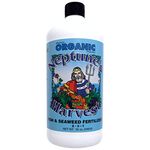
Neptune's Harvest Fish & Seaweed Blend Fertilizer 2-3-1 36 Oz
Neptune's Harvest

9.5
4
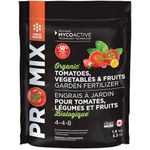
PRO-MIX® Organic Tomatoes, Vegetables and Fruits 4-4-8
Pro-Mix

9.3
6% off
5
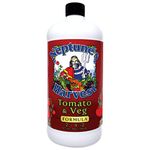
Neptune's Harvest TV136 Tomato & Veg Formula Fertilizer, 36 oz
Neptune's Harvest

9.1
OtherUp to 23% off
16% off
6

Osmocote Smart Release Fruit & Veg Plant Food 453 g
Osmocote

8.9
7
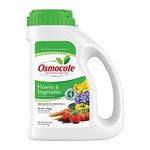
Osmocote Flower and Vegetable Smart-Release Plant Food, 4.5-Pound (Plant Fertilizer)
Osmocote

8.6
19% off
8
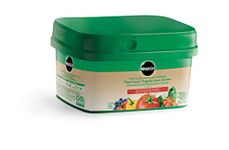
Miracle-Gro Water Soluble Tomato, Fruit & Vegetable Plant Food - 500g
Miracle-Gro

8.4
9
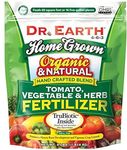
Dr. Earth Organic 5 Tomato, Vegetable & Herb Fertilizer Poly Bag
Dr. Earth

8.1
10
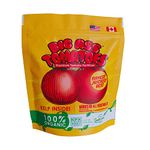
Big Tomato Fertilizer – 13.5oz Premium Organic Fertilizer with Kelp – Plant Fertilizer for Tomatos Indoor and Outdoor Plants – Nutrient-Rich Organic Fertilizer for Vegetables, Fruits, Plants
Big Ass Fertilizers

7.9
A Guide to Selecting the Best Tomato Fertilizers
Choosing the right tomato fertilizer can make a big difference in the health and productivity of your tomato plants. Fertilizers provide essential nutrients that tomatoes need to grow strong, produce lots of fruit, and resist diseases. When picking a fertilizer, it's important to understand what your plants need at different stages and how to read the labels. By focusing on a few key specifications, you can select a fertilizer that matches your gardening goals and the specific needs of your tomato plants.
N-P-K Ratio
The N-P-K ratio stands for Nitrogen (N), Phosphorus (P), and Potassium (K), which are the three main nutrients in fertilizers. This ratio is usually shown as three numbers, like 10-10-10. Nitrogen helps with leafy growth, phosphorus supports root and flower development, and potassium boosts overall plant health and fruit quality. For tomatoes, a balanced or slightly higher phosphorus formula is often best. If you want more leaves, choose a higher nitrogen number; for more flowers and fruit, look for higher phosphorus and potassium. Think about your plant’s stage: young plants benefit from more nitrogen, while fruiting plants need more phosphorus and potassium.
Type of Fertilizer (Granular vs. Liquid)
Fertilizers come in granular (solid) or liquid forms. Granular fertilizers are sprinkled on the soil and release nutrients slowly over time, making them good for long-term feeding. Liquid fertilizers are mixed with water and applied directly to the soil or leaves, providing a quick nutrient boost. If you want convenience and less frequent application, granular is a good choice. If you want to quickly correct a deficiency or give your plants a fast boost, liquid is better. Your gardening style and how often you want to fertilize can help you decide.
Organic vs. Synthetic
Organic fertilizers are made from natural materials like compost, manure, or bone meal, while synthetic fertilizers are made from chemical compounds. Organic options improve soil health over time and are often preferred for edible crops, but they may work more slowly. Synthetic fertilizers act quickly and are easy to measure, but they don’t improve soil structure. If you prefer natural gardening and long-term soil health, go organic. If you want fast results and precise control, synthetic might be better for you.
Micronutrients
Besides the main N-P-K nutrients, tomatoes also need small amounts of micronutrients like calcium, magnesium, and iron. Calcium is especially important to prevent blossom end rot, a common tomato problem. Some fertilizers include these extras, while others do not. If your soil is already rich in micronutrients, you may not need extra, but if you’ve had problems like yellow leaves or blossom end rot, look for a fertilizer that includes these trace elements.
Release Time
Some fertilizers are labeled as slow-release or controlled-release, meaning they provide nutrients over a longer period, while others are quick-release and act immediately. Slow-release fertilizers are good if you want to fertilize less often and provide steady nutrition. Quick-release fertilizers are useful if your plants need an immediate boost or if you want to see fast results. Consider how much time you want to spend fertilizing and whether your plants need ongoing support or a quick fix.
Best Reviews Guide Newsletter
Get exclusive articles, recommendations, shopping tips, and sales alerts
Sign up for our newsletter to receive weekly recommendations about seasonal and trendy products
Thank you for subscribing!
By submitting your email address you agree to our Terms and Conditions and Privacy Policy
